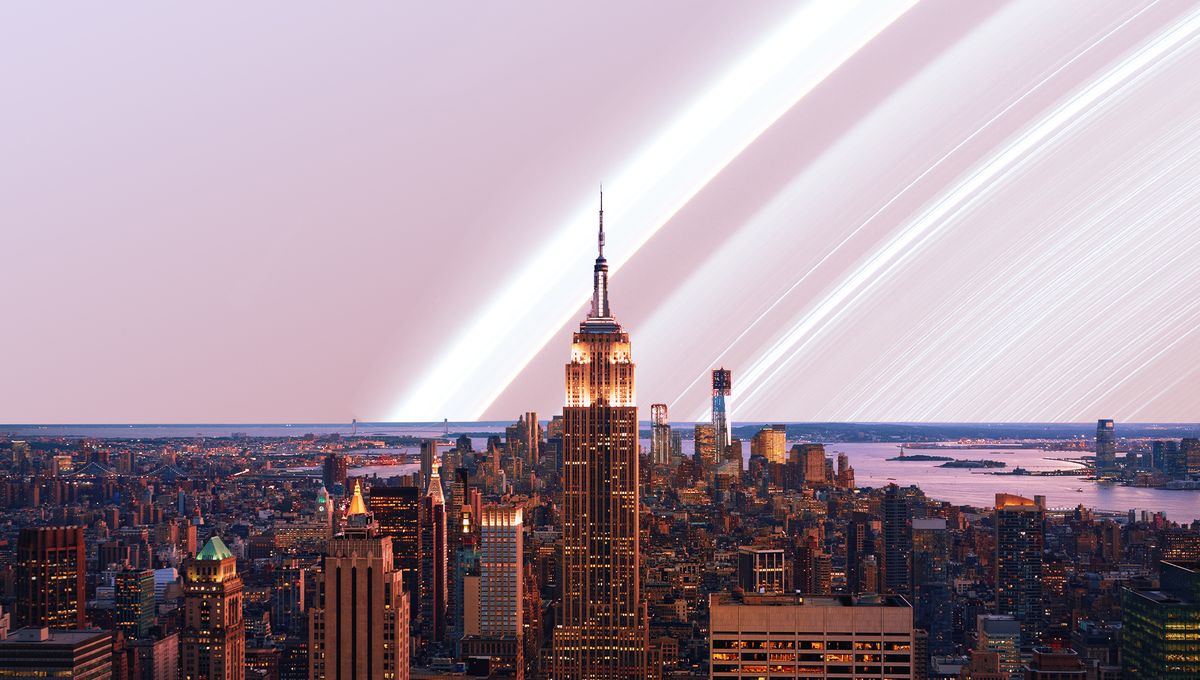
A ringed planet is a thing of beauty. Saturn is iconic – and let’s be honest, it’s 90 percent due to the rings because the planet itself does not have many other distinctive features. Earth’s beauty is very different, but it’s fun to wonder if it could be enhanced by the presence of rings. The question of aesthetics is in the eye of the beholder, but we can answer the scientific ones: How would Earth get rings, and what would happen to the planet?
Rings form from solid bodies coming too close to a planet. There is a range called the Roche limit: Within the limit, the tidal forces of the primary body – in our case the Earth – would be too strong and would disintegrate a satellite. It depends on the radius of the primary body and the density of the two bodies, so it is not just a single value.
If we take, for example, the Earth and the Moon, the Moon could orbit as close as 9,500 kilometers (5,900 miles) before it gets destroyed. If we want less rocky rings, maybe we need to consider the destruction of an icy moon. If it’s (possibly) good enough for Saturn, it is good enough for Earth.
How To Make The Rings?
So you are a celestial Sauron and you are ready to gift Earth with a ring (and you want to keep the Moon). So let’s make an icy ring just like Saturn. It is best then to introduce an icy moon with the density of Enceladus. It would need to get closer to our planet to be ripped apart – about 5,300 kilometers (3,300 miles) should do the trick to pulverize the icy moon. And you don’t need something as big as a moon. A comet as big as the largest ever found will be plenty to make a nice ring around Earth.
There is a little problem with this ring. Ice won’t keep well in our orbit, that’s why the bodies of the inner solar system are so dry. So we might have to stick with rocks. Might not be as shiny as ice, but the Moon is all rock and it still reflects about one-tenth of the light it gets. That’s good enough to get some bright rings.
The making of the ring is unlikely to be very laborious beyond bringing a sizable asteroid this close to Earth safely. You have your raw material in a nice little object, you put it at the right distance from your other object. Wait for the tidal forces to stress your target, and over time, a nice ring will appear. This is guaranteed to work on big and small bodies. Asteroids such as Chariklo have rings and they might be stable for 10 million years.
Their stability is important for our little experiment as well. The size of the particles that make the rings matters a lot, as well as the presence of shepherd moons, tiny satellites that help balance out the forces. It takes a village to keep the rings in orbit.
How Do You Keep A Ring?
Rings are not forever. Saturn’s rings might be as young as 400 million years, if not younger. This might not seem young for humans – but for a planet of 4.5 billion years, it’s less than 10 percent of its life. So the feature is temporary.
And the destruction is constantly happening. Some particles will fly off, but a lot of them will rain onto the planet. The inner portion of the rings will create a perpetual meteor shower over the equator.
On Saturn, the slow destruction of the rings heats up a specific portion of the upper atmosphere. It is likely that the same would happen on Earth. The lowest altitude for the rings is likely to be around 1,000 kilometers (600 miles). Particles below that altitude would get dragged down too quickly by the extremely thin atmosphere.
The consequences of the rain of rings are uncertain, since it’s not a problem we actually have to contend with. There would be some for sure, though. That would be a pretty consistent effect in the upper atmosphere, so it wouldn’t be business as usual. And it’s not just in the equatorial regions. Despite the arbitrary separation we place upon the planet, every region of the world is linked to the rest. Heating over the equator will affect the whole of Earth.
It seems that the whole affair might be more bother than anything. If we want to see what happens to a rocky planet once it gets rings, we can just wait for it to happen to Mars. In a few tens of millions of years, Mars’ moon Phobos will be ripped apart by the planet, and a ring system with all its beauty and dangers will form around the Red Planet.
All “explainer” articles are confirmed by fact checkers to be correct at time of publishing. Text, images, and links may be edited, removed, or added to at a later date to keep information current.
Source Link: What Would The Earth Be Like With Rings?